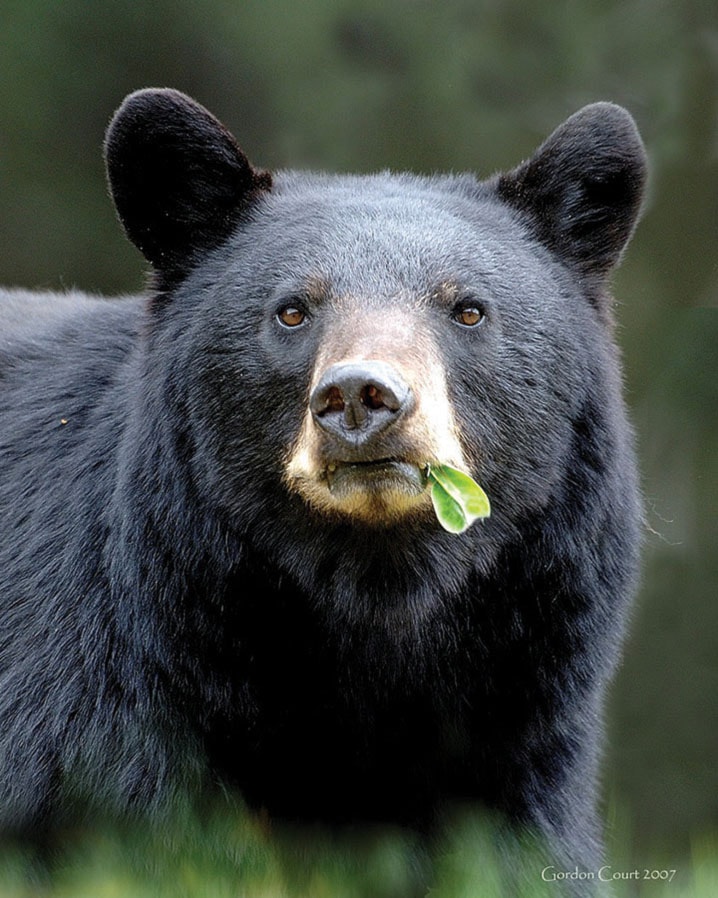Rocky Mountain House wildlife biologist Anne Hubbs likes bears — nevermind that when she was first doing graduate work in the Yukon she found herself having to scramble and climb a flimsy tree to escape one of the big furry omnivores.
She was with a group that had rounded a corner and come across a grizzly guarding its food. “My tree, I got up only about four feet because it was the smallest thing you’ve even seen, and the bear just sat and watched us for a bit. We eventually got the nerve up to walk away.”
Years later, having observed many other bears — both black and grizzly — Hubbs can say: “I’ve not had any bad encounters at all with blacks, or with grizzlies to be honest.
“I do like bears. They are that symbol of nature to me, and something that’s special to see because it’s not a common experience to see a bear.”
Today the senior wildlife biologist for Alberta Fish and Wildlife is focusing special attention on black bears and how little is actually known about their current population in the province. She hopes to see that changed.
Hubbs is overseeing a three-year trial that involves collecting teeth from black bears harvested both west of Red Deer and in northeastern Alberta. This could eventually help determine whether the entire province’s black bear population is healthy, or otherwise, and help with managing their overall harvest.
No one really knows for sure how many black bears there are because data on their densities are old, based on estimates that were developed more than 20 years ago. As well, the impact of new development and growth in the province since then has not been factored into the equation.
In areas like the northeast part of Alberta where there is good bear habitat in the boreal forest, it’s believed there are relatively high densities of black bear. A lot of them are harvested there by way of hunters, trappers and outfitters.
“That may be sustainable. So there may not be worry there. In other areas where the habitat isn’t quite so good … not having such good cub protection or immigration from other areas … we may have concerns,” Hubbs said.
“Maybe we have concerns in some areas like in the foothills here, and in others maybe levels could be even higher in terms of harvest.” The foothills, with older aging forests, does not provide the best habitat for black bears.
There may be about 40,000 bears in Alberta. “The big question is we really don’t know because we don’t have good updated information,” she said.
That’s where the teeth come in.
“The teeth give us an amazing amount of information,” Hubbs said, including age, gender, identity and also when females have had young and how frequently. This will to help develop a population model for the areas involved.
Hunters and trappers are being asked to voluntarily submit a premolar tooth from each bear harvested in two areas of the province — Wildlife Management Units 318-332 (generally the foothills, mountainous area northwest and southwest of Red Deer) and WMUs 500-504, 506, 509-512, 514-519 and 529-531 (generally the boreal forest northeast part of Alberta).
Different methods are available to collect data but they are expensive and manpower intensive, and as a result they’re very hard to replicate over time, Hubbs said. “That’s why we’re looking at something simple like teeth that we can get help from the hunters, the trappers, the public.”
Black bears can be an indicator of how the ecosystem is doing because they are a top predator and they are omnivores, eating a varied diet including carrion, small mammals, sometimes moose and deer calves, ants, berries and vegetation.
Hubbs said that Alberta hunters kill on average about 1,650 bears every year and non-resident hunters take 1,150. Trappers take between 60 to 550. Additional mortality numbers by landowners, First Nations and poaching is unknown.
Bears, besides their aesthetic and ecological value, have considerable economic value. About 12,000 Albertans and 1,700 non-residents buy hunting licences every year. From that is a trickle down economic impact such as money spent on accommodation and food, taxidermy and tourism.
Questionnaires done in the Rocky area and other jurisdictions, surprisingly given the fear that some have, showed people tend to value black bears highly, Hubbs said.
Whether they’re a hunter or an outfitter and they see that economic component, or whether it’s just the aesthetic value, like big horn sheep for example, they do attract a lot of people to the parks and West Country just to see them, she said.
“When you talk to people about black bears there isn’t the same fear as there is with grizzly bears. For some reason people view them as less threatening.” Hubbs doesn’t see bears as dangerous when they are shown respect and if people are pro-active in removing food and garbage from temptation. Alberta Environment’s BearSmart program is aimed at reducing conflict between bears and humans.
The three-year bear tooth collection trial is in its second year. They received about 60 teeth in the first year and these have been sent off to a lab for analysis. They hope to see those results in August.
After the trial, the data will be evaluated to also decide whether to continue with it, expand it, or possibly even make black bear tooth collection mandatory. They want to make sure the information has good value first before considering it become compulsory, Hubbs said.
“We would like to increase our samples, and I think we will. The first year is always hard getting the word out particularly when it’s voluntary but we were pleased with the co-operation.”
The first bear hunting season of 2016 has just ended. It will open up again in late summer and the fall.
barr@www.reddeeradvocate.com
